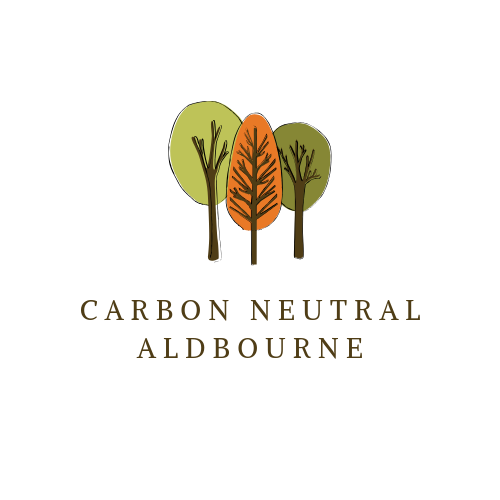Back by popular demand – Aldbourne’s verge wilding project returns in 2022
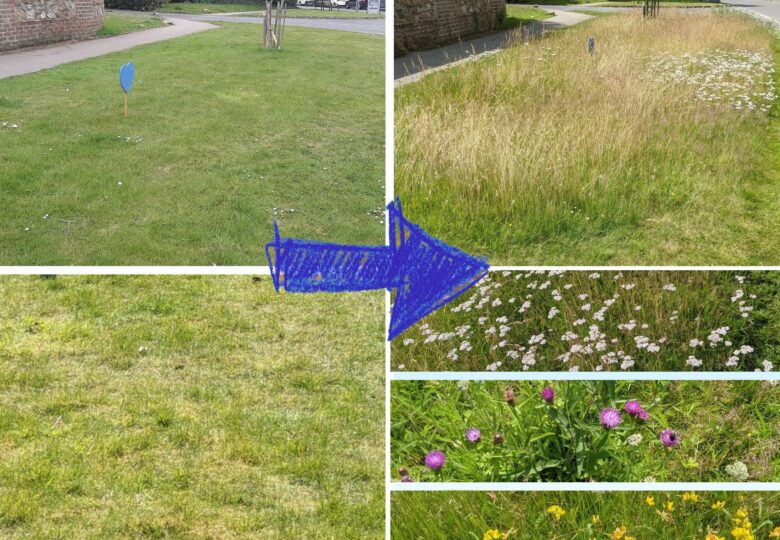
At the March 2022 Parish Council meeting the council approved Carbon Neutral Aldbourne’s request to continue the change to the mowing regime for some areas of verge within the village. Hopefully you will agree that last year the verges looked beautiful and we are hopeful that even more wildflowers will make an appearance this year as the verges adjust to the less frequent mowing.
Why do we need to make changes to our verges?
Our planet’s insects are in crisis and we need to do something about it. Human impact on habitats, rising pollution levels and climate change are all contributing to a worrying long-term decline in insects. These insects are a vital part of a healthy, functioning ecosystem providing many essential services – they pollinate crops, they provide food for other animals and they act as decomposers.
So what is the new regime?
The wildflower mowing guidelines were produced by Plantlife, a British Conservation Charity, and have been adopted by many Councils including Wiltshire Council.
Selected verges will be mown twice a year, once in April and again in September when they will be cut for the final time until April of the following year. All cuttings were removed in October last year to keep the soil fertility low. This allows the wildflowers to compete against the more dominant grasses.
We have also selected some verges where just one cut takes place in April. This means that the year’s growth will be left to overwinter providing much-needed overwintering habitat for insects and their eggs.
Each new area will, again, be framed by a mown area which is a great way to keep the verge looking neat and intentional. It also maintains safety and has the added benefit of creating structural diversity which is great for supporting insect life.
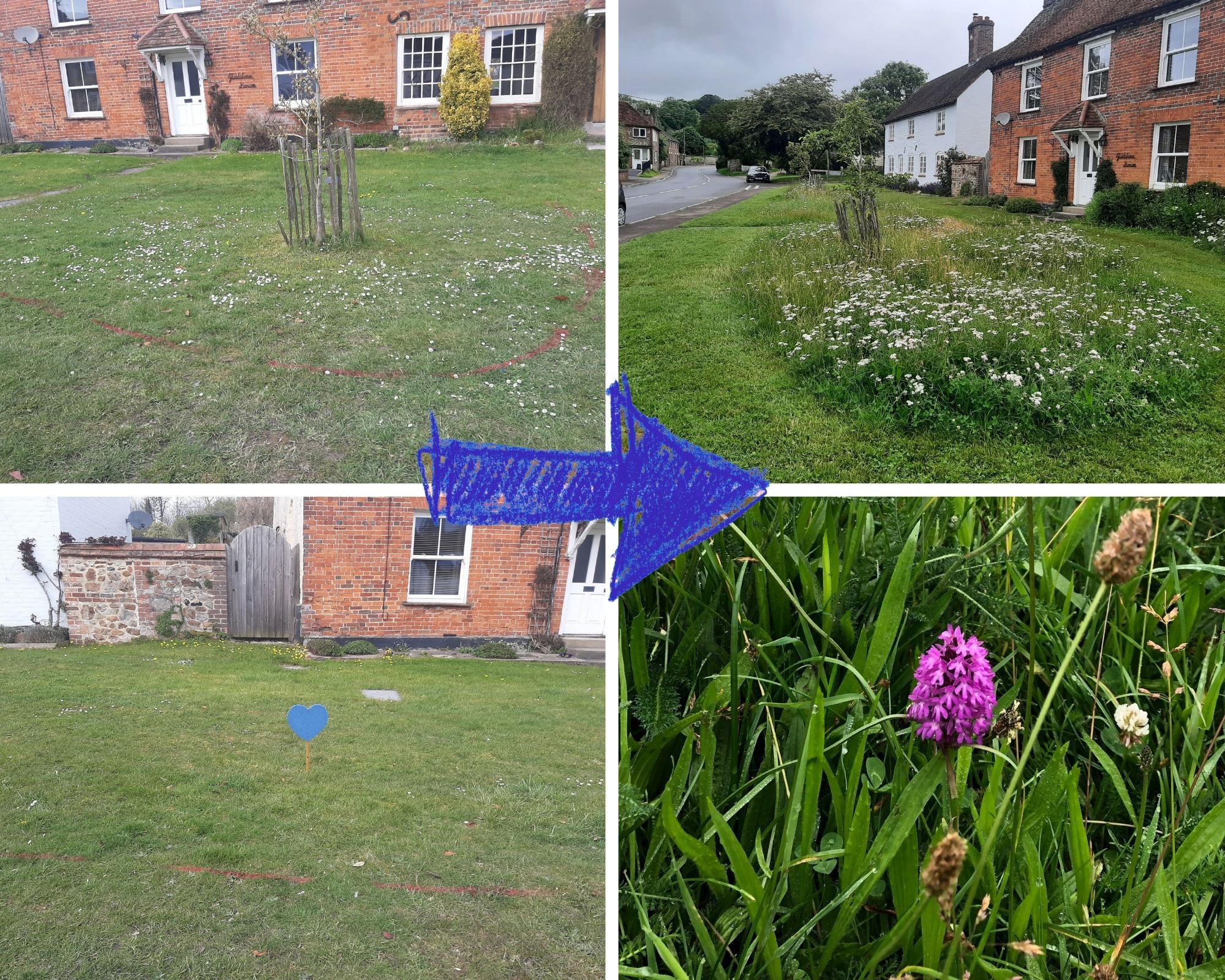
Are there any changes this year?
The verges that have been selected will be marked up at the beginning of April to show the mowers which areas to leave out of the next round of mowing. In the majority of cases the verges chosen are the same ones as last year. Those chosen are the most suitable in terms of visibility. Keeping the same verges in the new mowing cycle also allows them to adapt and improve year on year. A couple of verges have been put back into the regular mowing cycle but with the addition of the banks on the football field the overall area has increased for 2022.
So what can you expect to see?
Last year we were lucky enough to see some beautiful displays of wildflowers including Orange Hawkbit, Birds-foot Trefoil, Yarrow and the exiting arrival of a Pyramidal Orchid or 2!
We are looking forward to seeing an increase in the wildlflowers this year including perhaps more Cowslips, Oxeye daisies, Scabious, Knapweeds, Vetches and Meadow Crane’s-Bill.
Along with the appearance of wildflowers we also saw an increase in insects including bees, butterflies, beetles and an Elephant Hawk Moth.
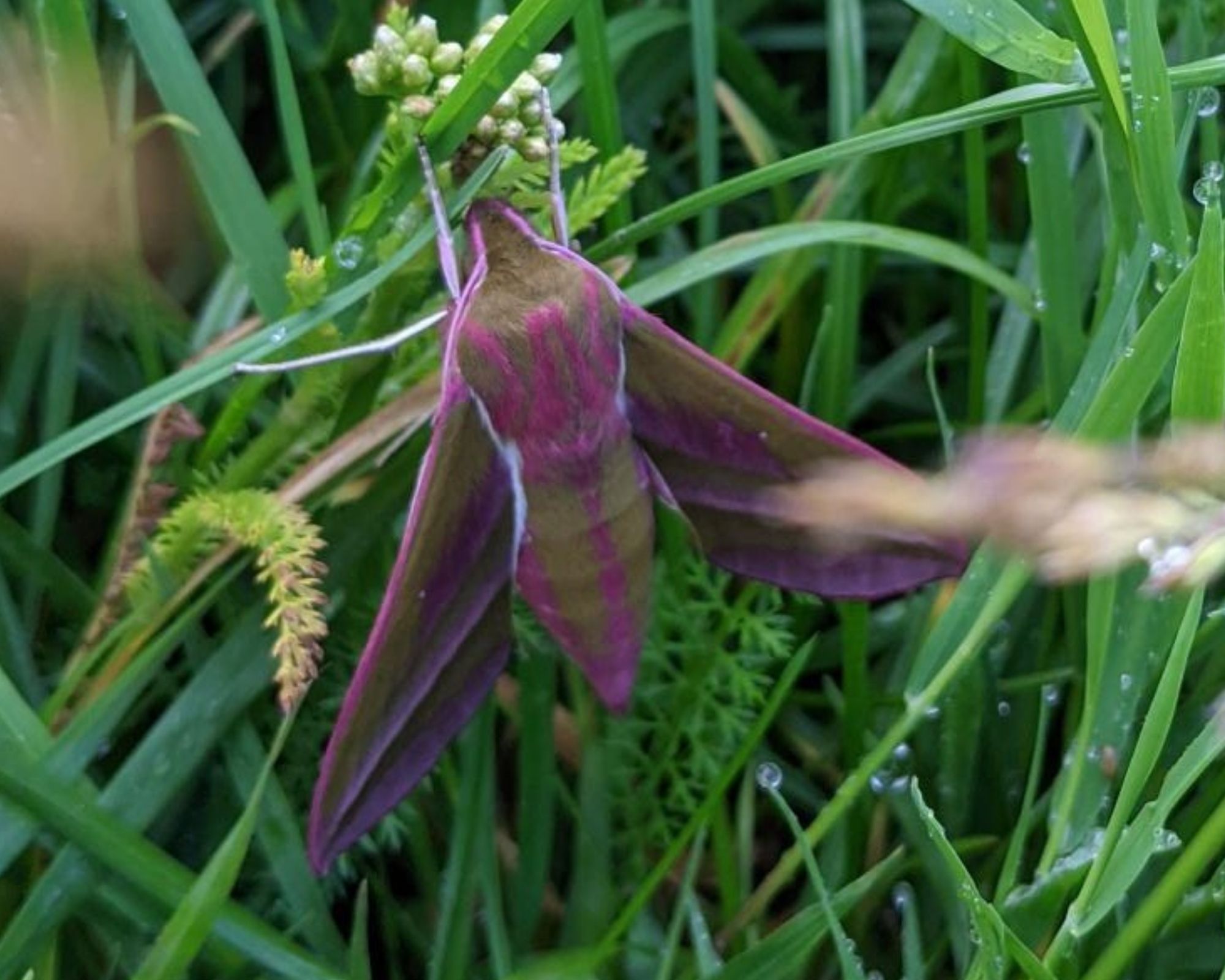
Will the verges be monitored?
We plan to keep a close eye on the unmown verges and we will be looking out for the appearance of wildflowers and insects. If you see anything interesting we would love to hear about it. You can get in touch via our website or on our Facebook Page.
We will also be keeping an eye out for any problems that may arise. But if you see anything that you are concerned about please get in touch.
Why have we chosen not to plant up the area with wildflower seeds or plants?
Last year’s show of wildflowers proved that many plants and seeds are already present within the grass and giving them a break from mowing allowed them to flourish. This means that the verges look better for longer, contain more native species and are much-less labour intensive to manage.
In other towns and villages you may have seen areas which have been stripped and re-seeded with wildflowers. This is an excellent way to attract pollinators and if done well can look beautiful. However, the wildflower mixes often contain non-native species and may only attract certain pollinators. They also require a lot of work initially and each area must be left alone while the seeds are germinating and establishing. Most of the verges in Aldbourne are used regularly and they are very visible so bare patches that cannot be walked across would not be ideal.
Beautiful wildflower seed mixes are often short-lived too meaning that the verges would only be at their best for a few weeks a year.
All verges will be monitored and in future years we may consider adding seeds/plants to enhance what is already there.
What are we planning to do about the untidiness of the borders towards the end of the season?
Although most people were very happy with the verges last year we did receive some comments regarding the state of the unmown areas towards the end of the season. As the grass growth progresses it is liable to flop in wetter weather and the growth can start to look unkempt when the grasses die back and turn brown.
Getting the right balance is tricky. We have a tendency to prefer ‘neat’ spaces but it is essential that we allow spaces to grow and provide vital food and habitat for wildlife. After carefully researching the best times to mow these areas we have concluded that a late September cut would provide the food and habitat the insects need whilst also ensuring that (by removing the cuttings) we keep soil fertility low. Cutting at this time should also mean that the verges continue to look beautiful and well cared for up to the time of the final cut. Leaving the less visible verges unmown throughout the winter will provide much-needed overwintering spaces.
What is biodiversity and why does it matter?
Bio-diversity is the variety of life on earth in all its forms from bacteria to trees or flowers to dogs and cats. Its rather like a piece of music which only sounds right if there are no missing notes. It matters because each part is dependant on the next one. Here are just two examples: we need bees to fertilise our crops and plants to produce oxygen.
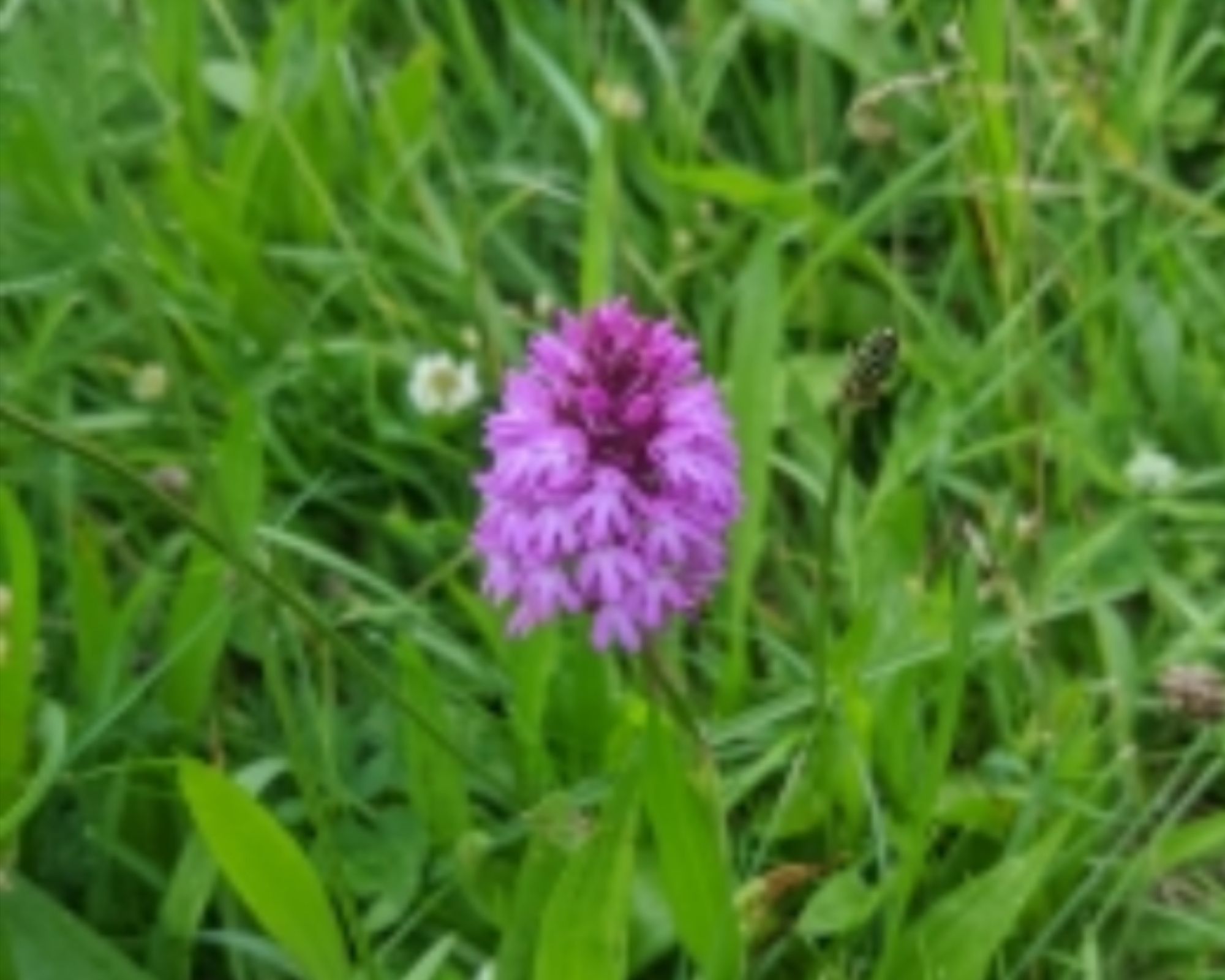
Pyramidal Orchid on an unmown verge 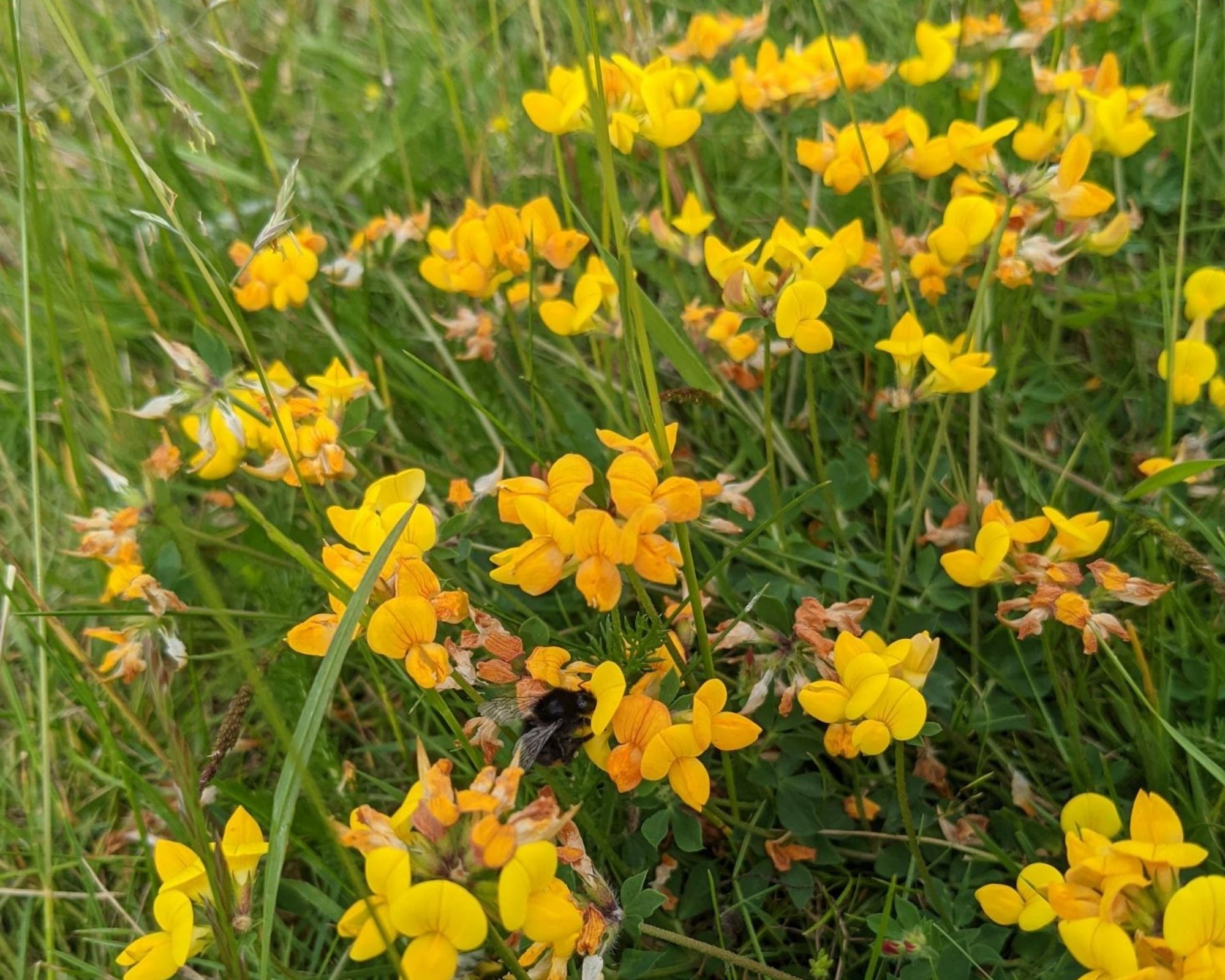
Bee enjoying some Bird’s-foot Trefoil 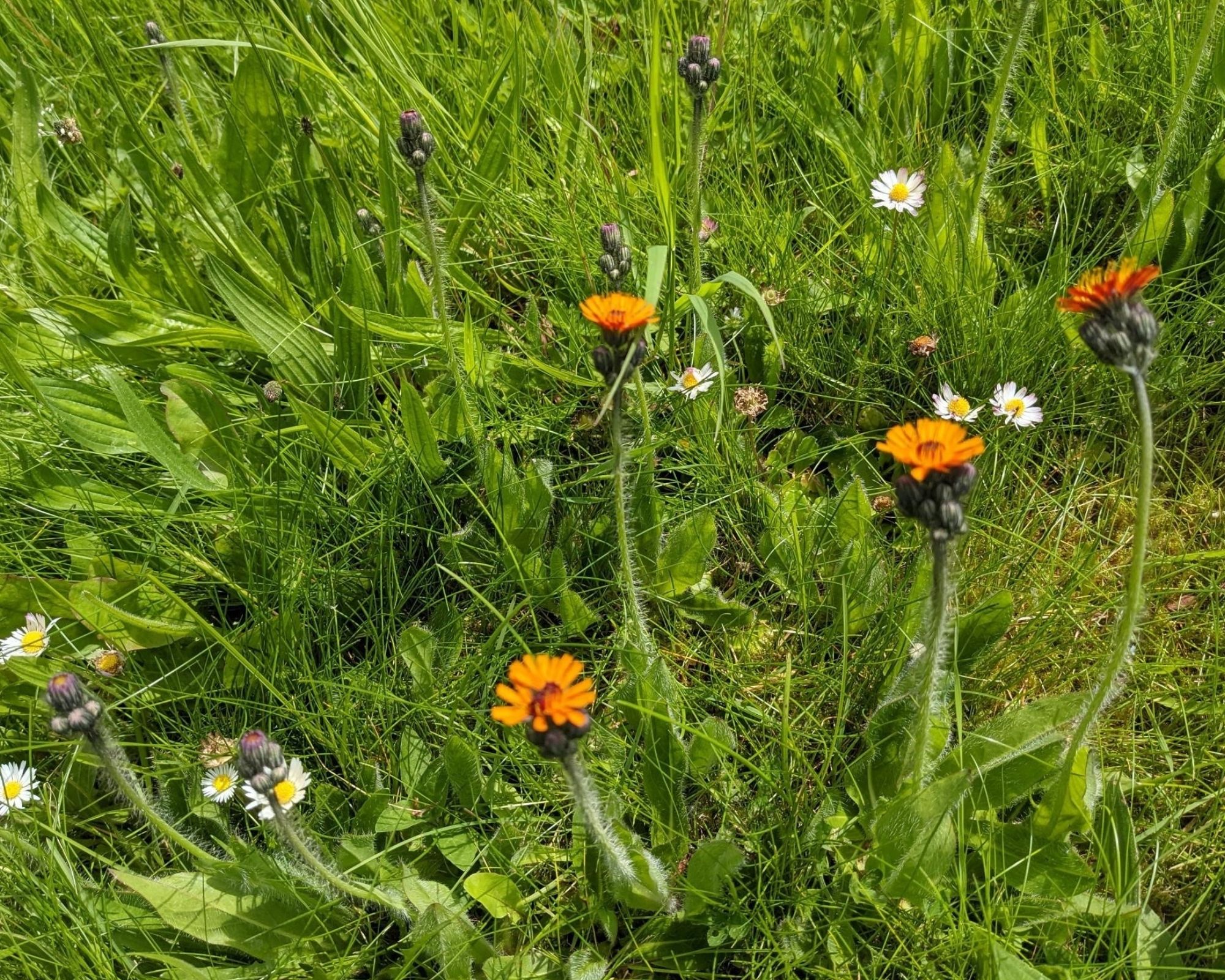
Orange Hawkweed allowed to flower 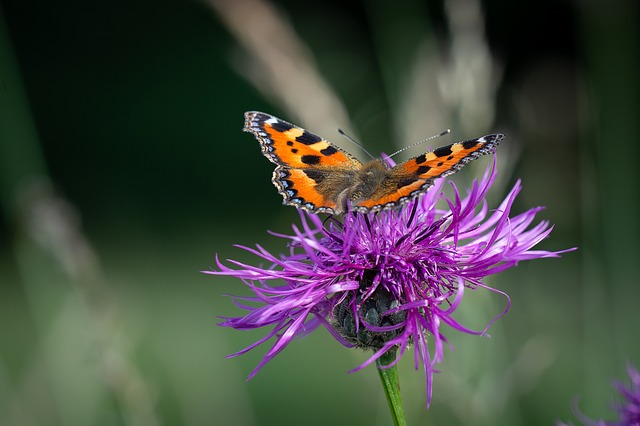
If you have a garden – no matter how small – then our wildlife needs you!
Rewilding our verges is not enough – we need everyone in Aldbourne to dedicate as much space as they can to wildlife. This means less hard-landscaping, no fertilisers/pesticides and less frequent mowing.
We were blown away by the response to our Nature Reserve project last year and we achieved our target to dedicate 7000 m2 of gardens to wildlife-friendly plants, ponds and insect lodges. That’s the size of a football pitch!
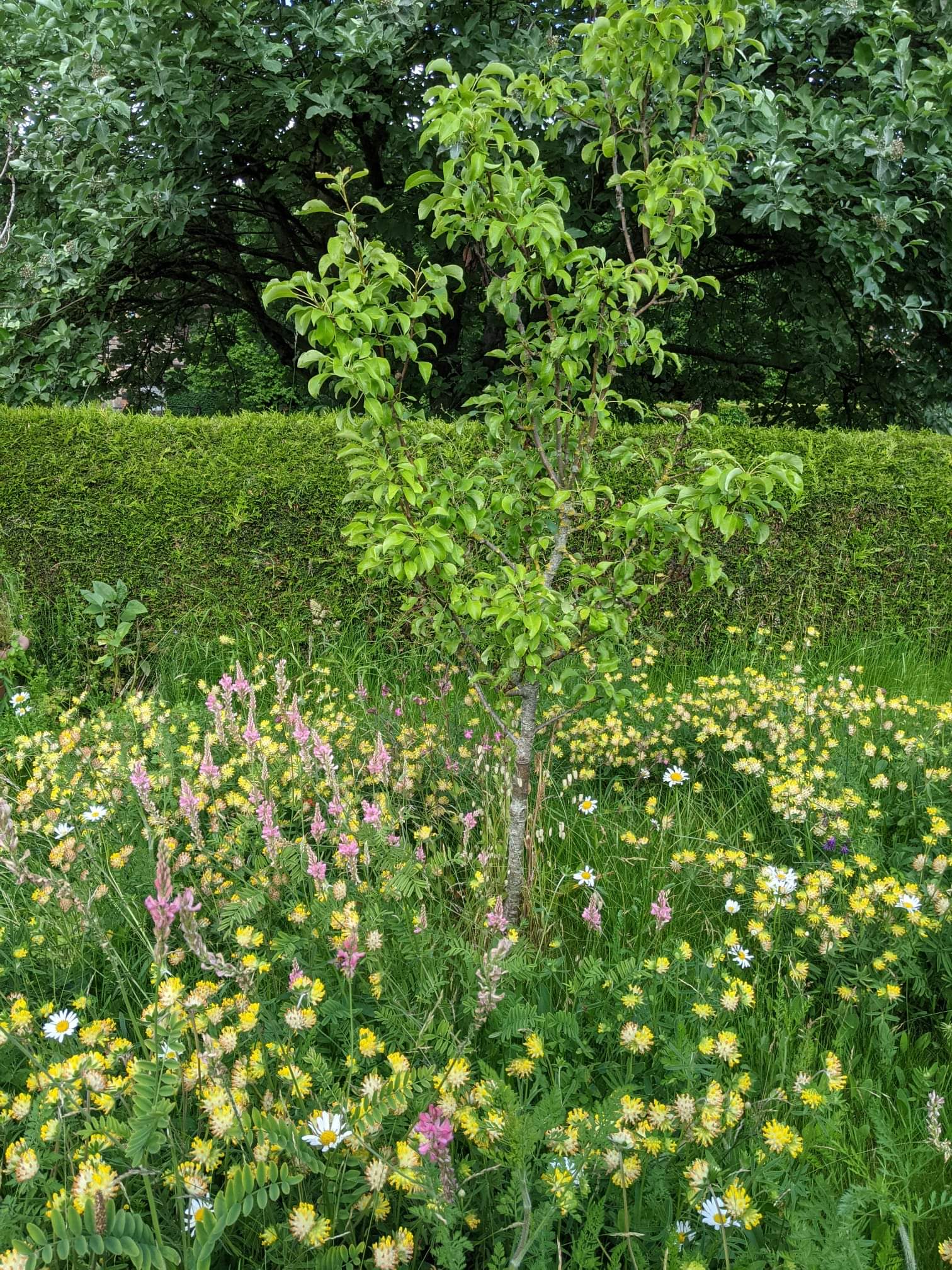
But we are not stopping there! We want to create another football pitch in 2022 so please consider taking part if you haven’t already.
Patches range from 1m2 to over 1000m2 – all are beautiful, diverse and great for wildlife. We are offering you the chance to visit some of the spaces at our Open Gardens event on Sunday 26th June. Keep an eye on our website and Facebook page for further details.
If you decide to dedicate some (or all) of your garden to wildlife-friendly gardening we would love to include your patch in our nature reserve. Find out more on our Aldbourne Nature Reserve page.
